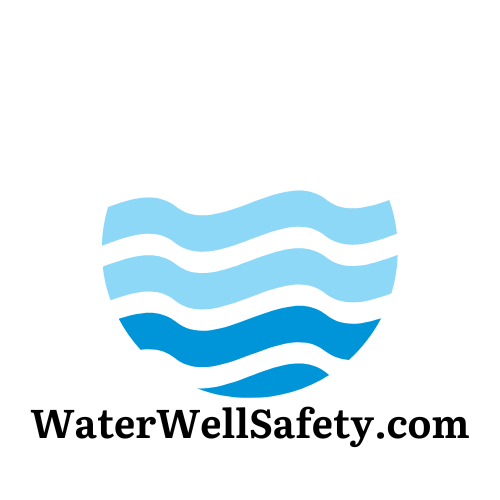Understanding Oklahoma’s Water Well Regulations: OWRB and DEQ Compliance
In Oklahoma, water wells are a vital resource for homeowners, contractors, and municipalities, providing access to groundwater for drinking, irrigation, and community use. However, operating and maintaining a well comes with strict regulations set by the Oklahoma Water Resources Board (OWRB) and the Department of Environmental Quality (DEQ). These rules ensure wells are safe, sustainable, and compliant with state standards, protecting both public health and the environment. At WaterWellSafety.com, we specialize in helping you navigate these regulations through our Hazard Analysis, Water Sampling Consultation, WellCare Plans, and exclusive WaterQuality Assured Program. In this post, we’ll break down key OWRB and DEQ requirements, explain their importance, and share a case study showing how our services ensure compliance.
Why Well Regulations Matter in Oklahoma
Oklahoma’s aquifers, like the Ogallala and Garber-Wellington, face unique challenges such as nitrate contamination, seismic activity, and depletion from overuse. The OWRB and DEQ enforce regulations to safeguard these resources and prevent issues like bacterial contamination or structural failures. Non-compliance can lead to fines (e.g., $500–$5,000 for unpermitted wells), health risks, or costly repairs (e.g., $10,000 for redrilling a failed well). Understanding these rules is critical for homeowners maintaining private wells, contractors installing or servicing wells, and municipalities managing public water systems. Let’s explore the key regulations and how to stay compliant.
1. OWRB Regulations: Well Construction and Permitting
What They Are: The OWRB oversees water well construction, permitting, and usage under Title 785 of the Oklahoma Administrative Code. These rules ensure wells are built to withstand Oklahoma’s environmental challenges, like seismic activity or flooding.
Key Requirements:
Permitting: All new wells must have an OWRB permit before drilling. Permits require details like well location, depth, and intended use (e.g., domestic, irrigation).
Construction Standards: Wells must have proper casings (e.g., steel or PVC, at least 5 inches in diameter), grouting (e.g., bentonite seals), and setbacks (100 feet from septic systems, 50 feet from property lines).
Driller Licensing: Only OWRB-licensed drillers can construct or modify wells, ensuring compliance with National Ground Water Association (NGWA) standards.
Reporting: Well completion reports must be filed within 60 days, detailing construction materials and aquifer data.
How to Comply:
Hire a licensed driller for new wells or major repairs.
Verify setbacks and casing integrity during annual inspections.
Use our Hazard Analysis to confirm your well meets OWRB standards.
2. DEQ Regulations: Water Quality and Testing
What They Are: The DEQ regulates water quality under Oklahoma’s Environmental Quality Code, ensuring wells meet safe drinking water standards. This is critical in Oklahoma, where contaminants like nitrates (from agriculture) or bacteria (from poor sealing) are common.
Key Requirements:
Water Testing: Private wells must be tested annually for contaminants like coliform bacteria, nitrates (below 10 mg/L), and volatile organic compounds (VOCs), especially near oilfields.
Treatment Systems: If contaminants are detected, wells must have treatment systems (e.g., reverse osmosis, UV disinfection) to meet DEQ standards.
Public Wells: Municipal wells require quarterly testing and public reporting to ensure compliance with the Safe Drinking Water Act.
Recordkeeping: Owners must maintain test records for at least three years.
How to Comply:
Schedule professional water testing annually, avoiding DIY kits for accuracy.
Install DEQ-approved treatment systems if needed.
Book our Water Sampling Consultation for comprehensive testing and compliance guidance.
3. Ongoing Maintenance and Reporting
What It Is: Both OWRB and DEQ require ongoing maintenance to ensure wells remain safe and functional. This includes regular inspections, pump maintenance, and compliance documentation.
Key Requirements:
Inspections: Wells must be inspected annually for structural integrity (e.g., casings, caps) and equipment performance (e.g., pumps, pressure tanks).
Maintenance Records: Document all inspections, tests, and repairs to prove compliance during audits or property sales.
Water Use Reporting: Large wells (e.g., municipal or irrigation) must report annual water usage to the OWRB.
How to Comply:
Enroll in our WellCare Plans (Essential, Professional, Enterprise) for scheduled inspections and maintenance.
Keep detailed records using our digital templates, available through the WaterQuality Assured Program.
Use our services to streamline reporting for municipal wells.
Case Study: Ensuring Compliance for a Tulsa Homeowner
In 2024, a Tulsa homeowner contacted WaterWellSafety.com after noticing cloudy water in their well, located near a former oilfield site. Suspecting contamination, they were also concerned about selling their property without OWRB and DEQ compliance. Here’s how we helped:
Step 1: Hazard Analysis: Our team conducted a comprehensive Hazard Analysis, identifying a cracked casing likely caused by seismic activity in the Garber-Wellington Aquifer region. We also found improper setbacks from a neighbor’s septic system, violating OWRB rules.
Step 2: Water Sampling Consultation: We tested the water and detected elevated VOCs, likely from oilfield residue, exceeding DEQ limits. We recommended a reverse osmosis system to restore water quality.
Step 3: Repairs and Certification: We coordinated with a licensed driller to repair the casing and install a new well cap. The well was then certified through our WaterQuality Assured Program, ensuring compliance with OWRB and DEQ standards.
Outcome: The homeowner received a WaterQuality Assured seal, boosting their property’s value by 5% during the sale. They avoided a $2,000 fine for non-compliance and gained peace of mind knowing their water was safe.
This case study shows how our services can simplify compliance and protect your investment.
How WaterWellSafety.com Ensures Compliance
Navigating OWRB and DEQ regulations can be complex, but WaterWellSafety.com makes it easy. Our services are tailored to Oklahoma’s unique challenges:
Hazard Analysis: Identifies structural and compliance issues, ensuring OWRB standards are met.
Water Sampling Consultation: Tests for contaminants to meet DEQ requirements.
WellCare Plans: Provides ongoing maintenance to prevent violations and costly repairs.
WaterQuality Assured Program: Certifies your well meets elite standards, adding value and trust.
By partnering with us, you can avoid fines, protect your water quality, and ensure your well complies with all regulations.
Take Action Today:
Schedule a Free Consultation: Discuss your well’s compliance needs with our Oklahoma experts.
Book a Hazard Analysis: Verify your well meets OWRB and DEQ standards.
Download Our Free Risk Management Handbook: Get expert tips on maintaining compliance.
